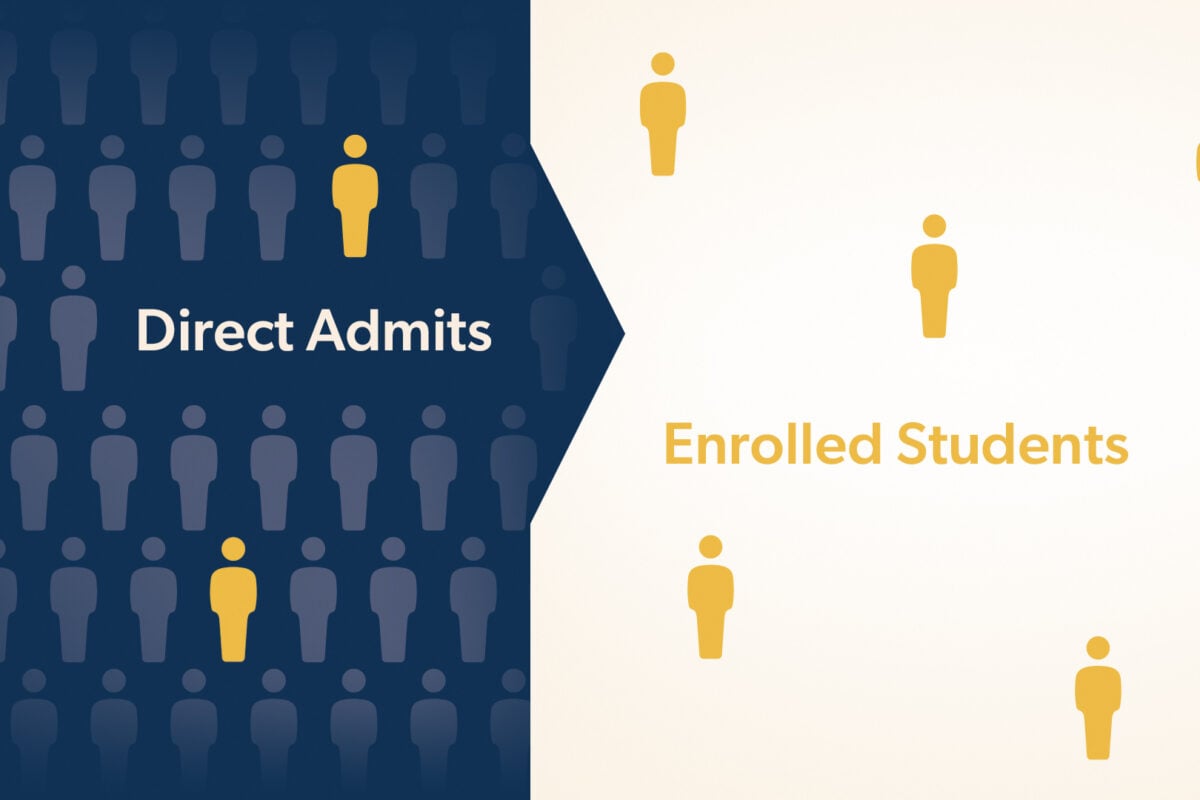Declines in undergraduate enrollment are forcing many institutions to look toward graduate programs to increase enrollment and generate additional revenue.
Unfortunately, many institutions are discovering their graduate marketing and recruiting structures are ill-equipped to meet the challenge.
Because graduate enrollment has often been viewed as a kind of bonus supplemental revenue, most programs have operated on autopilot. As a result, they lack the central oversight, coordination and collaboration necessary to increase yield. This new pressure to perform at a significantly higher level is leading to sleepless nights.
Completing an in-depth assessment—going beyond the typical components of a SWOT—can help institutions align admissions, marketing, recruitment and faculty to deliver meaningful benefits.
Communication, Collaboration and Coordination
Siloed activities create waste. For example, if media is going out from two different programs at the same university, they could be bidding on the same keywords and competing against each other. Your assessment should look at the recruitment and marketing activities across all graduate programs to find out what is and isn’t working.
In addition, look for areas of conflict, as well as opportunities for coordination and cooperation. Questions to ask of your campus partners include, “Who owns this activity? Who leads it, and who supports and contributes to it? Can overlaps or gaps be found and eliminated?” This will enable you to assign roles and responsibilities, allowing your team to work smarter and more efficiently.
Focus on What Impacts Effectiveness
You know graduate marketing is different from undergraduate marketing, but do your campus partners see this? At the graduate level, it’s less about the institution and more about the programs themselves. In most cases, potential students are not looking for housing, counseling, clubs or climbing walls.
Keep your audience in mind as you consider graduate marketing. Are you presenting program-specific information and connecting students to faculty profiles, research detail and outcomes? During the assessment, identify opportunities for broader, planned faculty engagement in the program marketing and recruiting process.
Make Data-Informed Decisions
Too many graduate marketers rely on assumptions, historical biases and gut feelings. Remember, most of the time graduate marketing is not brand marketing, but marketing focused on lead generation for the programs.
In this new environment, you must study your data to develop a clear understanding of your audience. This will help you create more accurate personas and craft more effective messaging. It can even help you better understand your competition. Savvy use of data can also help to identify what is and is not working with your current messaging. Perhaps most importantly, data can help you establish realistic goals and formulate a plan to achieve them.
Strengthen Leadership Support
You can do better than just asking for more resources because of higher enrollment expectations. Using data and the findings from this assessment, you can build a persuasive case for the right level of resourcing—budgeting and staffing.
When allocating budgets, many institutions simply divide dollars evenly among their graduate programs. While politically convenient, this is an ineffective marketing strategy. Some programs can meet their cap without spending a dollar, while others will falter no matter how much you promote them. A review of your program enrollments and goals will help you prioritize programs, allowing you to identify areas that warrant emphasis, as well as those that should be de-emphasized in marketing.
Your assessment should include input from program faculty, marketing and admissions. Bottom line, instead of approaching the big table with a nebulous request for “more money,” you can make your case for a justifiable figure based on data and actual engagement.
Position Your Team for Success
A well-planned graduate assessment will be most impactful when it has support from leadership—your provost or president. Keep in mind how valuable their support will be during the implementation of the recommendations generated. Growth in the graduate programs and the changes needed to support and ensure that growth must be an institutional priority.
Without leadership support, you jeopardize your ability to implement change, regardless of the merits of your intentions. Change is hard and requires a mindset that is not territorial but involves multiple decision-makers. Leadership support helps to build broader support regardless of reporting lines.
Begin Here
A graduate admissions and marketing assessment can be conducted internally or with the assistance of an independent third party like Paskill. We will offer a detailed, unbiased perspective of your current situation and a path to growth while being mindful of your situation. In addition, our recommendations will provide a thought process to organize your teams and the campus, prioritize steps, rally support and increase enrollment.




